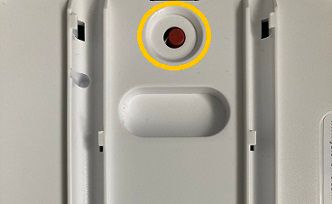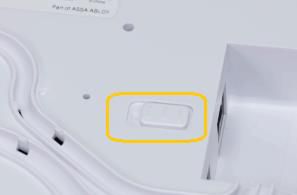The Yale Smart Alarm hub has 3 LED's.
White LED - This indicates normal operation and the unit is switched on.
Red LED (image of a cloud) - This indicates the hub is not communicating with the Yale cloud and is disconnected.
Orange LED (warning triangle) - to alert you the system needs attention.


The following conditions cause the Orange LED (warning triangle) to illuminate:
1. Hub Tamper:
The Alarm Hub has a tamper switch on the PCB, if the tamper switch is triggered by removing the rear casing, a Hub tamper event is generated resulting in a warning LED and also an emitted tone from the Alarm Hub.

2. RF Jamming:
The hub can detect if a prospective burglar is using an RF Jamming device to disrupt communications between sensors and hubs permitting entry undetected. You cannot generate this event without an illegal jamming device.
3. Device Tamper:
All devices except the Smoke module and keyfob have a tamper button. If the system is unset and a tamper is caused, the Yale Alarm hub will illuminate the Orange Warning triangle, emit a tone, and you will also receive an alert in the Alarm dashboard in the Yale Home app
4. Device Fault:
This fault type only pertains to the Smoke Detector and Smoke Detector module, once added to your Yale Smart Alarm system, if any of the following occur, the Yale Alarm hub will illuminate the Orange Warning triangle, emit a tone, and you will also receive an alert in the Alarm dashboard in the Yale Home app:
The Smoke Detector module has a Low Battery
The Smoke Detector module cannot communicate with the Smoke Detector.
The Smoke Detector is not correctly fitted to the Smoke Alarm mounting base plate.
Note - the Smoke Detector device fault warning can take up to 1 minute to clear from the Alarm Hub LED and Yale Home application.
5. Low Device Battery:
If a sensor, accessory, or Hub has a low battery.
If the Alarm Hub battery is disconnected.
There is a battery disconnect switch on the back of the unit, to disconnect battery. Slide to the disconnect position.

6. If the main power outlet is disconnected from the alarm Hub:
Disconnect the input supply to the hub, with battery connected and a hub mains disconnect will be alerted.
7. Device Supervision:
A supervision fault occurs when a sensor/accessory has not communicated to the hub within two hours.





